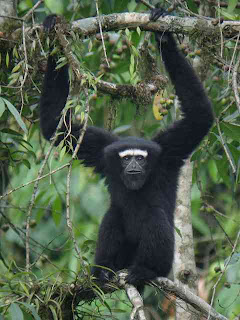1. High levels of solar radiation negatively impacts the survival of humans through ultra violet radiation. Too much exposure to UV rays can cause cancer which, if untreated, can spread through out the body and become fatal. Also, UV radiation depletes folate - a B vitamin - which can disturb developmental processes in pregnant women. For example, a defect caused by a lack of folate is spina bifida.
2. Humans have adapted to this stress in four different ways:
- Unlike other environmental stresses high levels of UV radiation do not have a short-term adaptation. For example, if one became hot he would sweat to provide relief, but if one received high levels of UV radiation without the proper protection, he would get a sunburn. The sun burn is an indication to stay out of the sun more, but is not an adaptation.

- A facultative adaptation humans have adapted to combat excessive solar radiation by temporarily producing more melanin, otherwise known as tanning.

- A developmental adaptation that protects humans from UV radiation is skin color, which is determined by the level of pigment. Some one born with dark, deeply pigmented skin would not change skin color from environmental stresses.

- A cultural adaptation to high levels of UV radiation is the use of sun screen. Sun screen is a modern tool used to provide supplementary protection from the sun.

3. This information is useful for preserving health. Not only can it be used to preemptively avoid harm - such as sunburns, cancer, or folate deficiency - but it also can be used after damage is done. For example, if a fair skinned northerner moved closer to the equator, he would know to stay covered and pack lots of sunscreen. By studying the affects of UV radiation on varying populations we understand how much radiation is necessary and how much is harmful for differently pigmented skins.
4. Race, in terms of solar radiation, is only the measurement of pigment in an individual's skin. Therefore, a race can be classified as a population with similar adapted traits. In general, we know that populations evolved near the equator have more pigment than those farther north and south.
Thinking in terms of race has been an exaggerated, misleading distinction in the past. It is beneficial to think in terms of adaptation, because it eliminates any myths based on skin color; while others may think one is lesser than the other, we know it's just levels of pigment.













